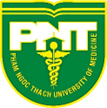Understanding the Importance of Environmental and Occupational Health Literacy
When it comes to our health, knowledge is power. The more we understand about the environment and the potential hazards in our workplaces, the better equipped we are to protect ourselves and make informed decisions. This is where environmental and occupational health literacy comes into play.
What is Environmental and Occupational Health Literacy?
Environmental and occupational health literacy refers to the ability to access, understand, evaluate, and use information about environmental and occupational hazards. It involves knowing how to identify potential risks, assess their impact on health, and take appropriate actions to prevent or minimize exposure.
Environmental health literacy focuses on the impact of the environment on our health, including factors such as air and water quality, chemical exposures, and the built environment. Occupational health literacy, on the other hand, deals with the health and safety risks in the workplace, such as hazardous substances, ergonomic issues, and psychosocial stressors.
The Importance of Environmental and Occupational Health Literacy
Having a good understanding of environmental and occupational health literacy is crucial for several reasons:
- Protection: By being aware of potential hazards in our environment and workplaces, we can take appropriate measures to protect ourselves and our communities. This includes using personal protective equipment, following safety guidelines, and advocating for healthier environments.
- Empowerment: Environmental and occupational health literacy empowers individuals to make informed decisions about their health. With knowledge comes the ability to seek out healthier alternatives and advocate for change.
- Prevention: Understanding the risks associated with environmental and occupational hazards allows us to take preventive actions. By identifying potential dangers early on, we can implement measures to reduce exposure and prevent health problems.
- Advocacy: Environmental and occupational health literacy enables individuals to advocate for policies and regulations that promote healthier environments and safer workplaces. By raising awareness and voicing concerns, we can contribute to positive changes in our communities.
How to Improve Environmental and Occupational Health Literacy
Improving environmental and occupational health literacy starts with education and awareness. Here are a few ways to enhance your understanding:
- Stay Informed: Keep up-to-date with the latest research and news related to environmental and occupational health. Follow reputable sources and organizations that provide reliable information.
- Attend Workshops and Trainings: Participate in workshops and trainings that focus on environmental and occupational health. These sessions can provide valuable insights and practical knowledge.
- Engage in Community Initiatives: Get involved in local initiatives that promote environmental and occupational health. This could include volunteering, participating in clean-up events, or joining advocacy groups.
- Advocate for Change: Use your knowledge and voice to advocate for policies and practices that prioritize health and safety. Write to your elected officials, support organizations working towards environmental and occupational health, and raise awareness among your peers.
Conclusion
Environmental and occupational health literacy is a vital tool in safeguarding our well-being. By understanding the potential risks in our environment and workplaces, we can take proactive steps to protect ourselves and advocate for healthier communities. Stay informed, get involved, and use your knowledge to make a positive impact on the world around you.
